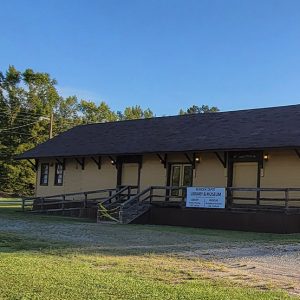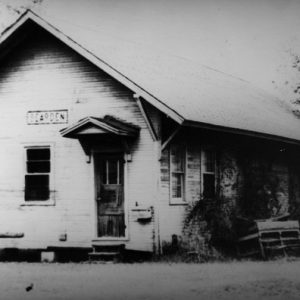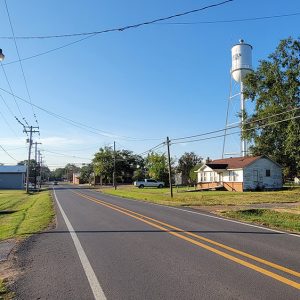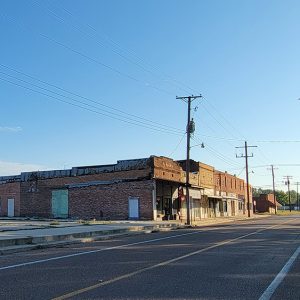calsfoundation@cals.org
Bearden (Ouachita County)
| Latitude and Longitude: | 33º43’28″N 092º36’56″W |
| Elevation: | 240 feet |
| Area: | 1.61 square miles (2020 Census) |
| Population: | 776 (2020 Census) |
| Incorporation Date: | January 23, 1892 |
Historical Population as per the U.S. Census:
|
1810 |
1820 |
1830 |
1840 |
1850 |
1860 |
1870 |
1880 |
1890 |
1900 |
|
– |
– |
– |
– |
– |
– |
– |
– |
– |
341 |
|
1910 |
1920 |
1930 |
1940 |
1950 |
1960 |
1970 |
1980 |
1990 |
2000 |
|
439 |
687 |
1,147 |
961 |
1,300 |
1,268 |
1,272 |
1,191 |
1,021 |
1,125 |
|
2010 |
2020 |
|
|
|
|
|
|
|
|
|
966 |
776 |
|
|
|
|
|
|
|
Bearden, originally founded as a railroad town, has been an important center for the timber industry in Arkansas. It is home to the annual Gazebo Festival.
Post Reconstruction through the Gilded Age
Bearden was founded as one of many whistle-stop communities along the Cotton Belt Railway Line during the steam engine years. The city limits for the town of Bearden were set in 1882 by the Southwest Improvement Association, an agency of the Railway Land Office. This office was part of what would become the Cotton Belt Railway Line. Bearden was named after one of the lawyers for the agency, Judge John T. Bearden. Among the first settlers were the Byars, Clemmons, Hollingsworth, and Shaddock families.
The small town soon began to prosper, primarily because it was between the larger communities of Camden (Ouachita County) and Fordyce (Dallas County). Over the next dozen years, several businesses began to flourish, such as Bearden Telephone Co., Dickerson Dry Goods, Gatling Realty Co., and Gatling Bank. With the success of these businesses and because of the central location, the Cotton Belt Lumber Company picked Bearden as the site of one of the largest lumber mills in that part of the state, the Cotton Belt Lumber Mill, which opened in 1885.
One of the more notable personalities of early Bearden history was Eleazer W. Norman, who began the first successful business, a general store, in 1886–87. Jack Ofterlee is remembered for starting the town’s first newspaper, the Bearden Banner, which began publication in 1889. William M. Gatling Jr. was president of the Bank of Bearden for many years and the most influential person in securing businesses for the town.
In 1889, a large mob hanged three African American men accused of attacking and stealing from a local white businessman.
Lumber was the driving force of Bearden’s economy. Four large lumber mills—the Cotton Belt mill, the Freeman-Smith Lumber Company, the Eagle Lumber Company, and the Stout Lumber Company—operated within six miles of the town from 1885 to 1930. At one point, the mills employed and supported more than 2,000 area men and their families. Most of the mill workers were farmers or sons of farmers. They would work the mills by day and the fields before and after work.
Early Twentieth Century
While the success was long lasting, Bearden, like many communities in the early 1900s, experienced the results of unsound lumber practices. Many acres were cut and not replanted correctly or at all, resulting in a shift in milling. Even so, the town continued to prosper, but with fewer mills. The first mill to leave was in 1923.
In 1910, Garland Anthony worked for his uncle at a sawmill near Harlow (Calhoun County). Anthony’s uncle turned the business over to him around 1910. Though it was a struggle at first, Anthony led the company, established as the Bearden Lumber Co. in 1945, to success. At one point, the operation was the largest in south Arkansas.
Cotton was also a staple in the region. Men such as Joab Byars owned thousands of acres of land used for lumber and cotton, as well as a cotton gin, which operated from 1914 to 1935, and several other businesses. He and Irving J. Bass were prominent entrepreneurs in the town. However, during the Depression, lumber sales were down, and cotton prices plummeted.
The Bearden Waterworks was constructed in 1936 and is listed on the National Register of Historic Places.
World War II through Modern Era
Lumber dominated the economy through World War II. With the war over, millwork began to decline. A potential savior for many unemployed mill workers and their families was the defense industry. In about 1944, the Shumaker Naval Ammunition Depot, on 68,640 acres near Bearden, employed hundreds. Other defense plants opened in the area as the Cold War emerged. Weapons are still tested nearby. The defense industry slowed in the late 1960s and early 1970s, with the navy leaving in 1961, but many still work in plants in the Camden area. The lumber industry experienced a resurgence when new techniques were employed to ensure year-round operation, such as the use of the power saw and trucks instead of trains for transporting logs.
With new facilities built in 1993, the Bearden School District is a source of pride in Bearden. Total desegregation of Bearden schools occurred during the 1969–70 school year. Bearden remains a lumber town, and the Anthonys are still involved in that industry. However, many small businesses have left because of the influx of “megastores” in neighboring areas.
Bearden has an annual Gazebo Festival, which was started in 1986 by Jackie Bevil and a gospel group singing in the park. Soon, they attracted a larger and larger audience each year and began to sell lunch boxes. This eventually grew into the Gazebo Festival, held the third weekend in June.
For additional information:
Saga of Bearden. Bearden, AR: Bicentennial Commission and the Freeo Extension Homemakers Club, 1976.
Benny Byars, Zettie Link, and Denise Link
Bearden, Arkansas
Robert Black
Arkadelphia, Arkansas





















Comments
No comments on this entry yet.